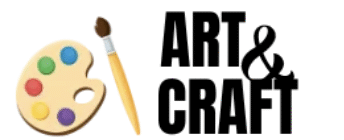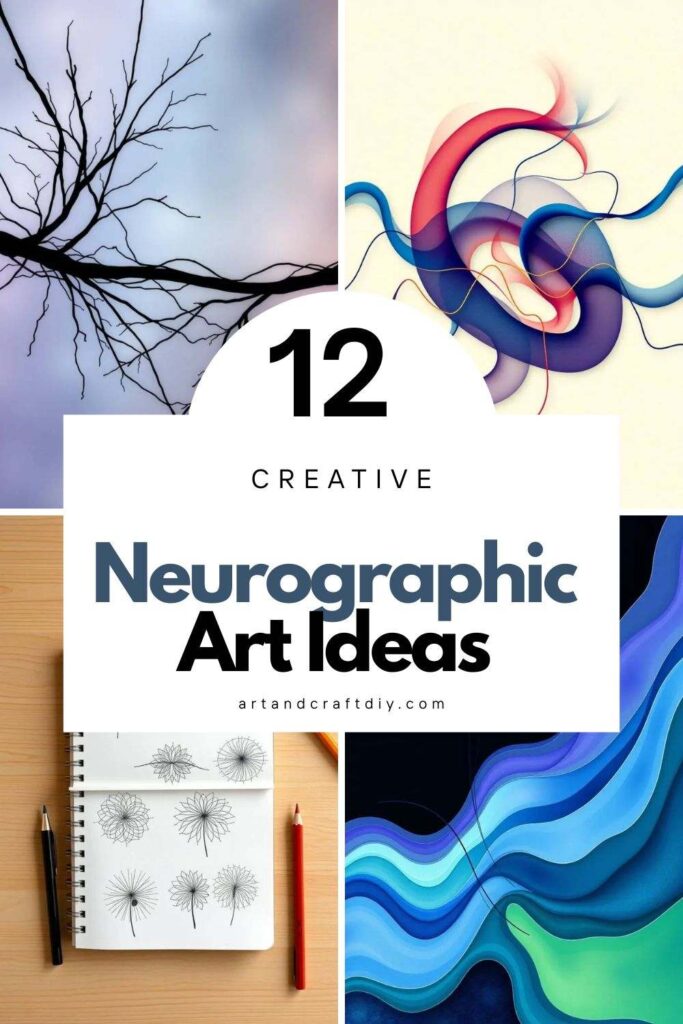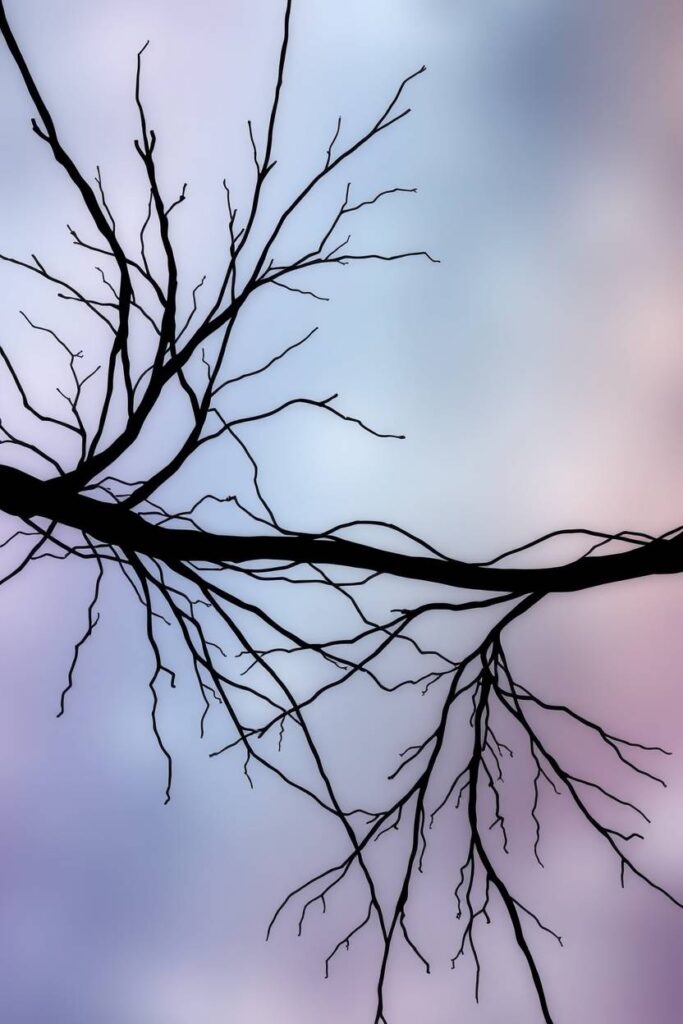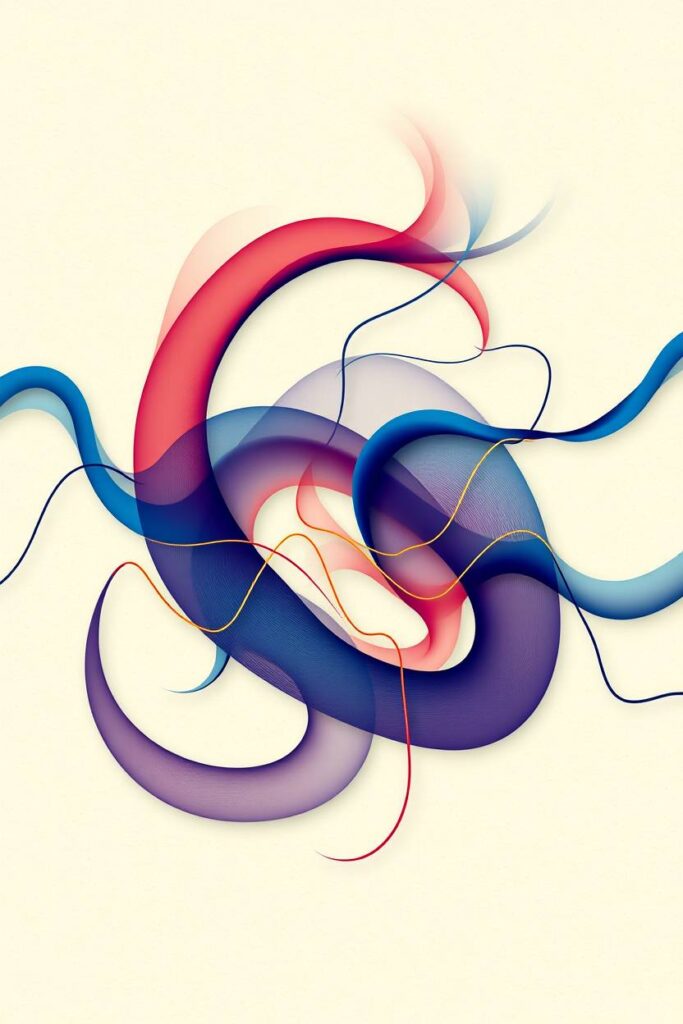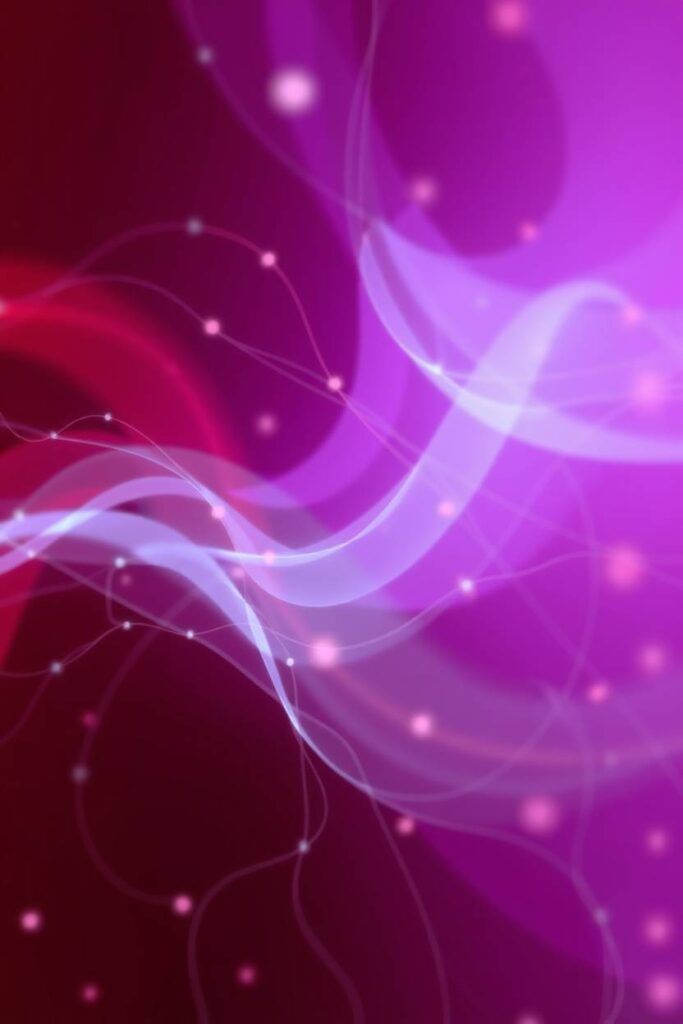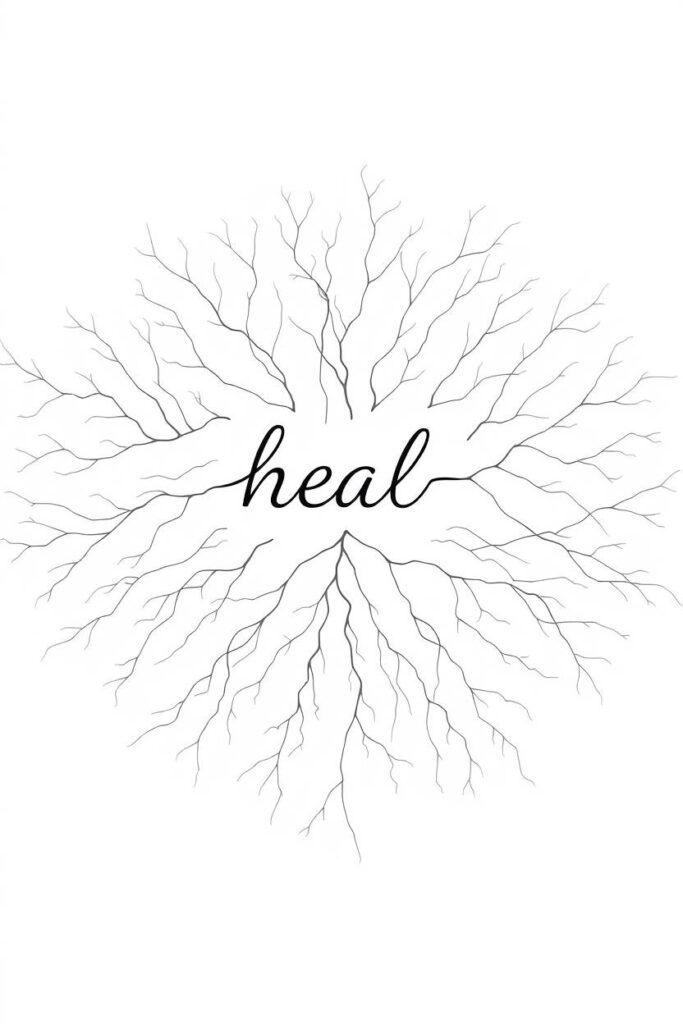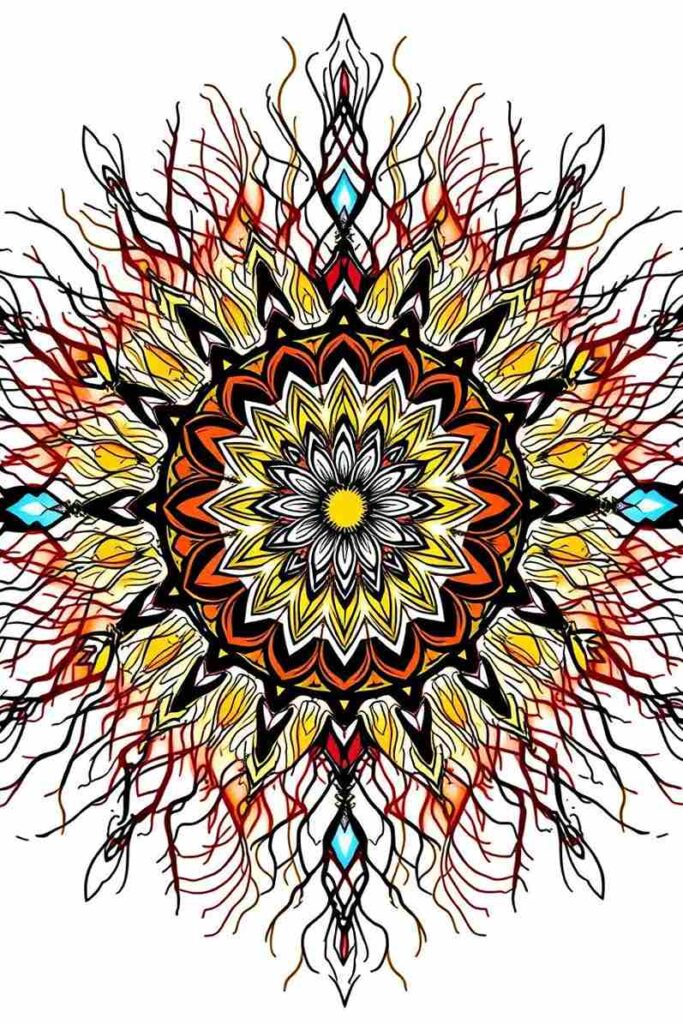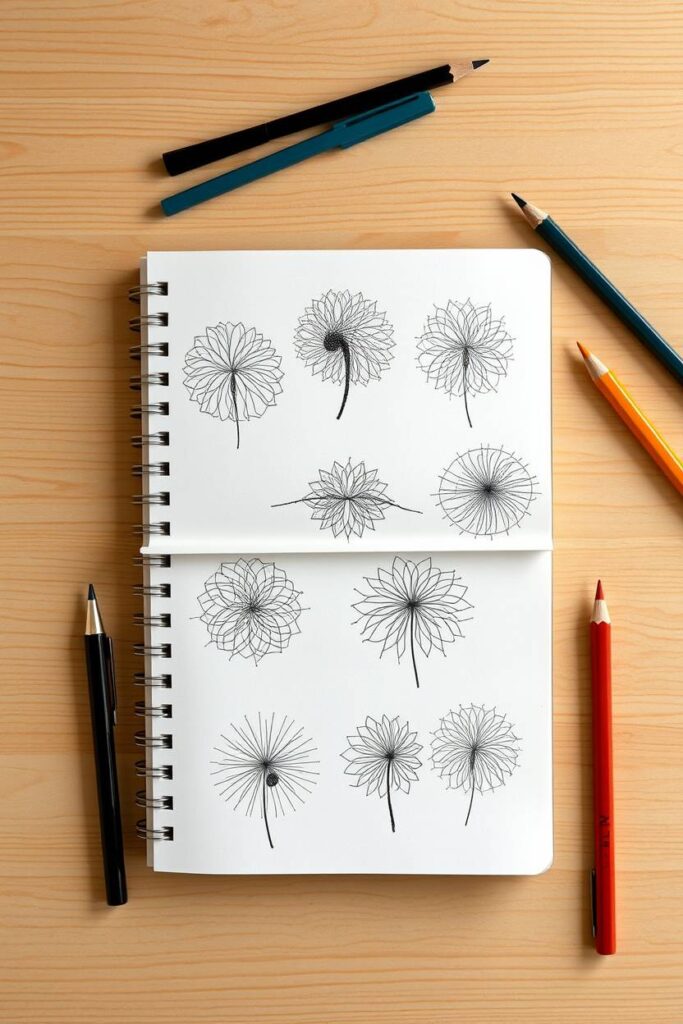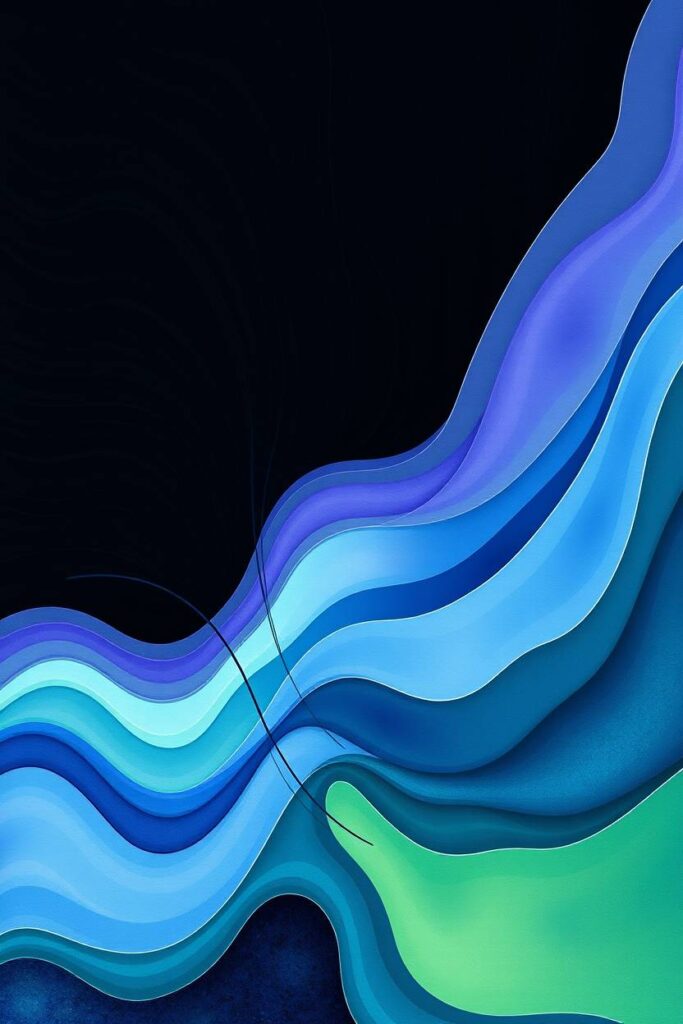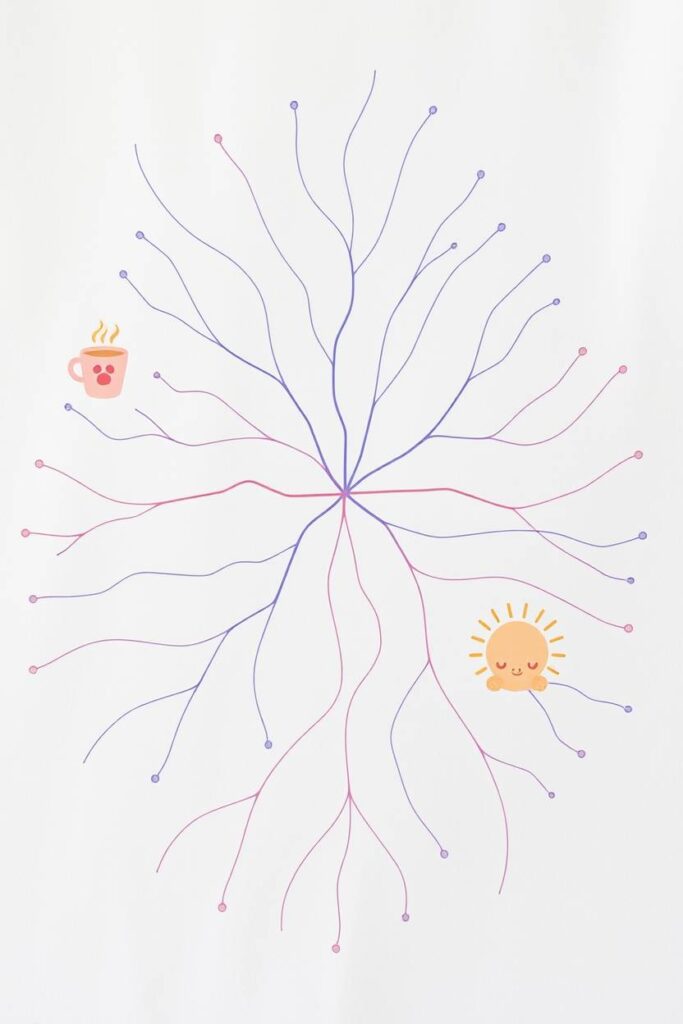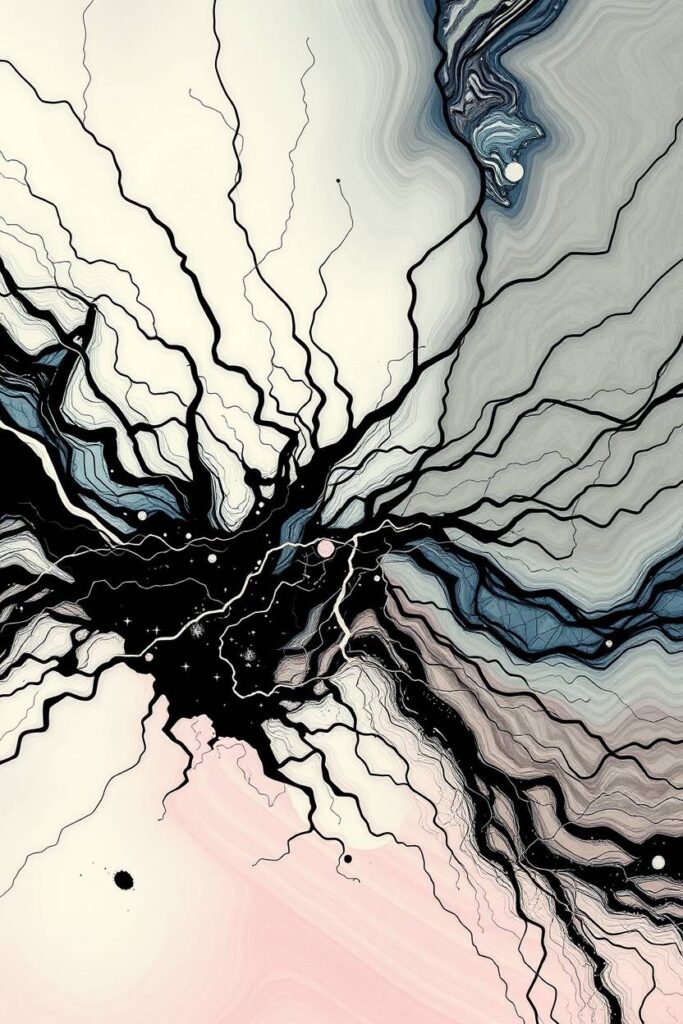If you’re looking for a calming, creative outlet, exploring Neurographic Art Ideas might be just what you need. Neurographic art is a unique drawing technique where abstract lines and shapes come together to express emotions, reduce stress, and bring a sense of peace. It’s not about making something perfect—it’s about letting your hand move freely, connecting your inner thoughts with your artwork.
Neurographic Art Ideas
Neurographic Art Ideas help you turn thoughts and emotions into beautiful, flowing artwork using simple lines and curves. It’s a relaxing, creative process that encourages mindfulness and self-expression.
Emotions into Art
Honestly, this one hits the most personal note for me. There was a day when I felt everything crashing down—like I couldn’t name a single thing going right. I grabbed a pen and just let my emotions pour out as lines. I didn’t plan. I didn’t think. I just let the chaos in my head take shape. The curves, the intersections—they weren’t neat, but they were me. Something strange happened. The more I drew, the calmer I felt.
Later, I looked at the tangled mess of lines and realized it was beautiful. Imperfect, but raw and real. That’s the beauty of turning emotions into art with neurography. You don’t need to explain it to anyone. It’s like your soul found a secret language. Give it a shot when words just don’t cut it.
Music-Inspired Lines
I once played a lo-fi playlist and let the beat guide my pen. Not exaggerating—this technique changed everything. The rhythm made my hand move differently, like I wasn’t the one in control, and I loved that. Fast beats? Jagged lines. Slow jazz? Smooth curves.
What’s fun is you don’t even need to like the music—just react to it. I even tried metal once (not my usual style), and the result was this wild, chaotic piece that actually looked kind of cool. In my opinion, letting music lead you creates some of the most honest art you’ll ever make.
Nature Shapes and Flow
I grew up surrounded by trees and muddy rivers, so nature always sneaks into my art. The other day, I sketched a pattern that mimicked the way vines crawl over walls. It wasn’t intentional—it just happened as I relaxed.
Nature has this quiet rhythm that seeps into your lines if you let it. Draw the wind. The roots. The way water flows. Don’t overthink it. I’ve found that sitting near a window or playing forest sounds while drawing makes a huge difference. It’s like the outdoors creeps into your hands.
Chakra Energy Patterns
Okay, I know this sounds woo-woo, but stick with me. I did a neurographic piece using the chakra colors, focusing on each energy center as I drew. Red for grounding, orange for creativity, and so on. I didn’t know what I was doing, but it felt powerful.
When I looked at the final drawing, I could literally see where I felt stuck—like my lines around the throat chakra (blue) were super tight and tangled. It was eye-opening. Whether you believe in chakras or not, using color with intention adds depth. And honestly? It’s just really pretty.
Word Prompt Drawings
Sometimes I’m too tired to start from scratch, so I pick a word—like “release” or “freedom”—and let that guide my piece. One time I chose the word “heal,” and my lines came out softer, slower. It felt like my pen was whispering.
Try writing the word in the center of the page and let your lines bloom from there. It’s fascinating to see how your mind interprets that one little word. It’s also great when you’re in a creative rut. Words have energy. Use them.
Mandala Fusion Art
I accidentally combined a mandala and neurography during a rainy Sunday sketch session, and now I’m obsessed. Start with a mandala center, then let your neuro lines break out of the pattern. It’s like order meeting chaos.
There’s something powerful about blending the symmetry of a mandala with the unpredictability of neurographic lines. I don’t always follow the rules, and that’s kind of the point. The best art, in my opinion, happens when you let different techniques crash into each other.
Daily Mood Mapping
I started this as a challenge—one mini neurographic sketch every day for a week, based purely on how I felt that day. No fancy setup, just a small journal and pen. Some days were messy. Others were tight and controlled.
By the end of the week, I could see my moods laid out in front of me like a timeline. It felt weirdly validating, like proof of what I’d been through. If you struggle to journal, try this. Drawing your mood takes off the pressure to explain it.
Scribble to Serenity
You know that moment when you just need to scribble? Like, aggressively? Start there. Scribble like a kid on sugar. Then slow it down. Start adding curves to your chaos. This is what I call scribble to serenity.
It’s oddly satisfying to turn random marks into something that feels peaceful. I’ve done this during stress storms and came out calmer. There’s no plan, no pressure, just movement. It feels a little like magic every time.
Gratitude Web Design
I tried this after a gratitude journaling workshop. Instead of writing a list, I drew a web—each node representing something I was thankful for: coffee, my messy dog, a good nap. Then I connected them with lines and filled the spaces with soft colors.
It turned into this cozy, colorful map of appreciation. I didn’t expect it to feel so warm. Gratitude doesn’t have to be in words. You can draw your joy, your comforts, your tiny wins. It’s a gentle practice I come back to when I feel off.
Dream-Inspired Doodles
Ever wake up from a weird dream and think, “What the heck was that?” Same. I started doodling them out in a neurographic way—like letting the strange feelings morph into lines and shapes.
Some dreams became swirling spirals, others had jagged edges. It’s more about the feeling than the exact image. I don’t always remember the dream, but I remember the vibe. And that’s what comes through on the page. Dream doodles = subconscious gold.
Tree of Life Neurography
This idea came from a painting I saw in a tiny café. I started drawing my own “tree of life” with neuro lines forming the roots and branches. Each section represented something—family, creativity, past mistakes.
I let the roots grow deep and the branches go wild. Adding color later made it pop even more. It’s deeply personal, and I feel like I could keep adding to it forever. It’s not just art—it’s a living record of who I am.
Spiral Thought Maps
My brain spirals sometimes—like I can’t stop thinking in loops. So I turned that into a visual. Start in the middle of your page with a circle, then spiral out while drawing your thoughts in neuro lines.
It’s not neat, but it’s real. You can even label the sections if you want to make sense of the mess. I’ve done this while overthinking, and it’s like untangling mental knots without even talking. Therapeutic in a quiet way.
Watercolor Background Blend
Watercolor and neuro lines? YES. Try this: splash some watercolor on your paper—nothing fancy, just let the colors bleed and blend. Then, once it dries, draw your neuro lines on top.
The contrast is stunning. I’ve found this especially freeing when I feel like the lines alone aren’t enough. The background gives it mood and emotion. Sometimes I even pick colors based on my feelings. It’s messy, expressive, and just plain fun.
Zentangle Mix Technique
I had a lazy Saturday once where I couldn’t decide between neurography and Zentangles, so I just mashed them together. And it worked. Neuro lines gave me the big picture flow, and Zentangles filled in the gaps with detail.
It takes time, but it’s such a satisfying combo. You get the calm of repetition and the surprise of unpredictability. Honestly, this might be my favorite way to zone out for a couple hours. Add tea, and it’s basically therapy.
Abstract Self-Portrait Neurography
Okay, this one felt a little vulnerable, not gonna lie. I sat down and thought about how I felt as a person—not how I looked. Then I started drawing. Lines to show chaos, curves to show softness, intersections for things I haven’t figured out yet.
I didn’t plan it. I just let the lines be my mirror. When I finished, I saw me—not in a literal way, but in essence. It’s weirdly emotional, but deeply worth doing. No one else has to get it. It’s yours.
Display & Share Your Work
Once you’ve created your Neurographic Art Ideas, don’t just leave it tucked away—show it off! Sharing your work not only boosts confidence but also inspires others to try this calming, creative practice. There are many fun and meaningful ways to display and celebrate your artwork:
-
Framing finished pieces for your home or office
Turn your favorite designs into beautiful wall art. A simple frame can transform your neurographic piece into a conversation starter or a calming visual in your space. -
Creating a neurographic art journal or sketchbook
Keep all your artwork in one place by dedicating a notebook to your neurographic journey. It’s a great way to track your progress, reflect on emotions, and stay consistent with your practice. -
Sharing on social media (hashtags like #neurographicart)
Post your creations online to connect with other artists and creative minds. Use popular hashtags to reach a larger audience and get inspired by others’ styles and ideas. -
Hosting an art night or gallery showing
Organize a small event where you and friends can share your work, discuss your process, or even create art together. It’s a fun way to build community around creativity and self-expression.
FAQ
What is neurographic art?
Neurographic art is a drawing method that uses free-flowing lines and curves to turn thoughts, emotions, and stress into abstract artwork. It promotes relaxation and creative expression.
Do I need to be an artist to try neurographic art?
Not at all! Neurographic art is for everyone. You don’t need any drawing skills—just a pen, paper, and an open mind.
What are the benefits of doing Neurographic Art Ideas ?
It helps reduce stress, encourages mindfulness, boosts creativity, and offers emotional clarity. Many people find it calming and mentally refreshing.
What materials do I need to get started Neurographic Art Ideas?
Basic materials include a pen or marker, paper, and optional coloring tools like colored pencils or watercolors. No fancy supplies are needed.

Hi, I’m Victoria, an art and craft teacher at Newark City Schools, where I have the joy of working with middle school students to help them explore their creativity and develop their artistic talents. I believe that art is a powerful way for students to express themselves, and I strive to make every lesson a fun, engaging, and inspiring experience.
I created this website to share the art and craft projects, techniques, and resources that I use in my classroom, hoping to inspire both educators and young artists alike. Whether you’re a teacher looking for new ideas or a student eager to try something new, I’m excited to provide creative tools and projects that anyone can enjoy.
When I’m not in the classroom, I love experimenting with different art forms and learning new crafting techniques. My goal is to help others discover the joy of making things with their hands, and I hope my website serves as a space for everyone to explore their creative potential.
